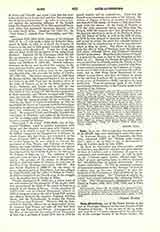

Saxe-Altenburg,, one of the Saxon duchies in the east of Thuringia; situated on the west frontier of the Kingdom of Saxony. It has an area of 511 sq. miles, and consists of two parts (separated by the principality of the younger branch of the Reuss family), the Ostkreis (254 sq. miles) and the Westkreis (257 sq. miles). It contained 216,312 inhabitants in 1910; 206,508 in 1905, including 5,449 Catholics (3 per cent), 200,511 Protestants, and 131 Jews. The duchy became a separate state in 1826, when in consequence of the extinction of the Saxe-Gotha line (1821), its possessions were divided among the Saxon ducal lines, the territory of Altenburg falling to the Saxe-Hildburghausen line as an independent domain. Duke Ernest II (b. 1871) has ruled since 1902. The present duchy was separated from the former Burgraviate of Altenburg, which belonged to the ancestral estates of the House of Saxe-Meissen, by the partition treaty of 1485, to which is to be traced the division of the princely House of Saxony into the Ernestine Line, ruling over the various Thuringian states, and the Albertine Line, ruling in the Kingdom of Saxony. Altenburg fell to the Ernestine Line. A special Duchy of Saxe-Altenburg was founded in 1603, but, on the extinction of the ruling family (1672), the territory fell to Saxe-Gotha.
The inhabitants of the territory constituting the modern duchy were prevailingly Protestant from the beginning of the Reformation movement. The few Catholics in the duchy are mostly immigrants who settled there during the latter half of the nineteenth century; in 1871 the Catholics formed only 0.14 per cent of the population. Catholic services have been held in the city of Altenburg by priests from Leipzig (Kingdom of Saxony) since the third decade of the nineteenth century—in the beginning only at long intervals. Since 1880 Altenburg has had its own priest, and today Catholic service and religious instruction are held in seven places in the duchy, partly by priests from the Principality of Reuss and the neighboring Prussian territories. By a Rescript of the Propaganda of June 27, 1869, the Catholics of the duchy were placed under the Bishop of Paderborn, and by Decree of the Propaganda of September 19, 1877, under the vicar Apostolic in the Kingdom of Saxony. There are no legal provisions governing the relations between the Catholic Church and the State, the government usually conforming to the principles observed in the Kingdom of Saxony. The public primary schools are all Evangelical-Lutheran; there is a Catholic private school (220 pupils in 1910) in the town of Rositz, to which the State has granted a subsidy since 1909. The erection of a private Catholic elementary school in the city of Altenburg (120 Catholic children under obligation to attend school) has not yet materialized owing to lack of funds. The Catholics are mostly poor immigrant factory hands.
HERMANN SACHER

